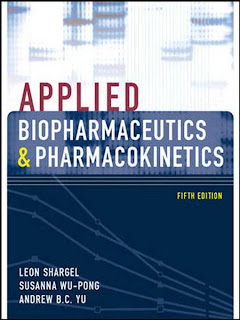Clinical Pharmacy and Therapeutics by Roger walker and Cate whittlesea
Clinical Pharmacy and Therapeutics by Roger walker and Cate whittlesea
Posted in
No comments
By Unknown

Introduction: Clinical Pharmacy and therapeutics
Getting started with Clinical pharmacy, unlike the discipline of pharmacy, is a comparatively recent and variably implemented form of practice. It encourages pharmacists and support staff to shift their focus from a solely product-oriented role towards more direct engagement with patients and the problems they encounter with medicines.
Over the past 20 years, there has been an emerging consensus that the practice of clinical pharmacy itself should grow from a collection of patient-related functions to a process in which all actions are undertaken with the intention of achieving explicit outcomes for the patient. In doing so, clinical pharmacy moves to embrace the philosophy of pharmaceutical care This chapter provides a practical framework within which a knowledge and understanding of therapeutics and practice can be best utilized.
It describes a pragmatic approach to applying both the principles of pharmaceutical care and the specific skills of clinical pharmacy in a manner that does not depend on the setting of the practitioner or patient.
Clinical Pharmacy and Therapeutics Chapters And Sections
Table Of Contents For Clinical Pharmacy and Therapeutics
Section 1 General
1. Clinical pharmacy process
2. Prescribing
3. Practical pharmaceutics
4. Drug interactions
5. Adverse drug reactions
6. Laboratory data
7. Parenteral nutrition
8. Macroeconomics
2. Prescribing
3. Practical pharmaceutics
4. Drug interactions
5. Adverse drug reactions
6. Laboratory data
7. Parenteral nutrition
8. Macroeconomics
Section 2 Life Stages
9. Neonates
10. Paediatrics
11. Geriatrics
10. Paediatrics
11. Geriatrics
Section 3 Therapeutics
12. Peptic ulcer disease
13. Inflammatory bowel disease
14. Constipation and diarrhoe
15. Adverse effects of drugs on the liver
16. Liver disease
17. Acute kidney injury
18. Chronic kidney disease
19. Hypertension
20. Coronary heart disease
21. Chronic heart failure
22. Arrhythmias
23. Thrombosis
24. Dyslipidaemia
25. Asthma
26. Chronic obstructive pulmonary disease
27. Insomnia
28. Anxiety disorders
29. Affective disorders
30. Schizophrenia
31. Epilepsy
32. Parkinson’s disease
33. Pain
34. Nausea and vomiting
13. Inflammatory bowel disease
14. Constipation and diarrhoe
15. Adverse effects of drugs on the liver
16. Liver disease
17. Acute kidney injury
18. Chronic kidney disease
19. Hypertension
20. Coronary heart disease
21. Chronic heart failure
22. Arrhythmias
23. Thrombosis
24. Dyslipidaemia
25. Asthma
26. Chronic obstructive pulmonary disease
27. Insomnia
28. Anxiety disorders
29. Affective disorders
30. Schizophrenia
31. Epilepsy
32. Parkinson’s disease
33. Pain
34. Nausea and vomiting



















